Historians tell us that throughout history Arabs have conducted trade between the ancient European kingdoms and Asia. Most ancient historians were content to simply call these traders ‘Arabs,’ and didn’t bother to denote nationality, tribe, or even their ports of origin. This has posed little problem to modern historians, as they too seem content to simply refer to these sailors as Arabs, and to let it be at that.
However, as I have been reconstructing a history of trade on the Indian Ocean, (particularly as seen from an Arab perspective), it is totally unsatisfactory to simply label these sea-going merchants as ‘Arabs.’ Which Arabs traveled to India during the time of the Roman Empire? What ports did they use, and where did they obtain their boats? How did they manage to sail across such a large expanse of water? And what did they do with the trade goods that they obtained?
There are many questions, and it is only by studying all of the Arab civilizations that existed during the Greek and Roman Empires that we will be able to draw any conclusion as to which of these groups were advanced enough to have made Ptolemy’s Alexandria the richest trading port in the world.
First, these Arab merchants must be given a great deal of credit, as they were making voyages that were greater in distance than what Columbus sailed, almost fifteen hundred years before Columbus set sail from Europe. This feat alone should get our attention, and should earn Arab sailors a place in our history books. Second, for several centuries these Arab sailors provided Europe with many of their luxury goods, while managing to keep many of their sources a complete secret. Finally, these Arab sailors were the means by which inventions and thoughts were transported from the Far East to Europe, causing the Greek and Roman Empires to develop into great and sophisticated civilizations.
Early Trade
So to understand who the ancient Arab traders were, we must go back in history to the time of the Greek Empire. After Alexander the Great’s death, the Greek Empire was split up between Alexander’s generals. Soon these generals began warring with each other for greater control. In the Middle East, this translated into a struggle between the Seleucids of Damascus and the Ptolomies of Egypt. These two dynasties struggled with each other for several hundred years. I believe it was during these years that Arab trade across the Indian Ocean developed.
It all started with elephants. At least that’s what appears to have started everything. (Rostovtzeff, M, Foreign Commerce of Ptolemaic Egypt, Journal of Economic and Business History, 4(4) page 740, 1932)
The Seleucid Army in Syria had elephants and the Ptolemies in Egypt had none. On top of this, the Seleucids had trade income originating with an Arab tribe known as the Gerrheans. This tribe lived on the Arabian cost of the Persian Gulf. They used small ships to travel along the coast, until they reached southern Arabia, and also northern India. From India they purchased goods, and then sailed back and up the Euphrates River, eventually unloading the goods and sending them across land to Damascus. From Arabia they brought incense. This maritime coastal sea route had existed from antiquity, and is first recorded for us in the annals of Ur of the Caldeese.
Along with this coastal maritime route, several overland trade routes existed between Mesopotamia and India. It was along these trade routes that Indian elephants were imported into the Seleucid’s Army. These elephants gave the Seleucids a tactical advantage against the Ptolemies of Egypt.
In order to counteract this tactical deficit, Ptolemy II Philadelphus, the ruler of Egypt decided to import African elephants into his army. In order to do this as fast as possible, he needed to move elephants from central Africa north . So he developed a series of ports on the Red Sea complete with elephant stopping stations. Elephants were then captured, trained, and eventually moved from the southern parts of Africa to Egypt via ships and ports. As this all took time, these elephants did not appear in Polemic armies until near the end of Ptolemy Philadelphus’ rule.
The building of ports and ships on the Red Sea was no simple matter. First of all, there were only one or two small ports in existence. Egypt had always looked north to the Mediterranean, and south, down the Nile River. They had an impressive navy on the Nile River, but no history of sailing on the Red Sea up to this time. Added to this, the Red Sea was famous for its pirates. These pirates lurked in all the bays and harbors along the sea’s edge. Thus it was very difficult for Egyptians and others to do trade on the Red Sea in the face of this certain piracy.
Therefore, the construction of a series of ports along the coast and the construction of war ships was mandatory before the Ptolemies could make the seas usable for their purposes. Added to this were the physical difficulties of sailing on the Red Sea. The Red Sea is dotted with many rocky shores, coral reefs, and is also susceptible to powerful winds from the south west. Any boat venturing into strange waters, with inexperienced sailors was at risk from the elements, not just the pirates.
The ancient historian, Diodorus tells us of Nabataeans living in the Sinai Peninsula in II.42.1-5 where he describes the oasis of Feiran, (Biblical Paran as mentioned in Numbers 10:12, 12:16, 13:26, Deuteronomy 1:1, 33:2). This oasis is near the Red Sea, and has a palm grove and a large Egyptian shrine. The Nabataeans were preceded in this area by the Lihyanites, who later became their allies. At the Nabataean city of Egra there is an inscription written in Nabataean stating ‘Mas’udu, king of Lihyan.’ The oasis of Feiran and its gulf were probably known as the Laeanites Gulf during the time that the Nabataeans lived there.
Diodorus tells us:
“After one has sailed past this country, the Laeanites Gulf comes next, about which are many inhabited villages of Arabs who are known as Nabataeans. This tribe occupies a large part of the coast and not a little of the country which stretches inland, and it has a people beyond telling and flocks and herds in multitude beyond belief. Now in ancient times these men observed justice and were content with the food which they received from their flocks, but later, after the kings of Alexandria had made the ways of the sea navigable for their merchants, these Arabs not only attacked the shipwrecked, but fitting out pirate ships and preyed upon the voyagers, imitating in their practice the savage and lawless ways of the Tauri of the Pontusl. Some time afterwards, however, they were caught on the high seas by some quadriremes and punished as they deserved.” (III.43.4)
Quadriremes were ships powered by both oars and a sail. They came into common use around 200 BC, which means that the Nabataeans were actively sailing ships and carrying on piracy about this time. Diodorus also mentions that this extended from the time that the Ptolemies of Alexandria made the sea navigable for their merchants. Since the Nabataeans conducted themselves as pirates on the Red Sea, this most likely refers to the building of seaports along the Egyptian coast during the rule of Ptolemy II to transport elephants. This points to the period stemming from 280 BC, soon after the Greek rulers set up the Petolomic kingdom in Alexandria. For example, the seaport of Berenike (Berenice) was the southernmost and most active Egyptian Red Sea port during Hellenistic and Roman times. It was founded by Ptolemy II Philadelphus early in his reign (around 283 B.C.), who named it after his mother. It seems that during the time this port was built and functioning, the Nabataeans were practicing piracy, and preying on ships that sailed the Red Sea and used this port. Pirates continued to be a problem for years after, even for the Nabataean traders, as Strabo tells us that it was common for merchants to hire archers to sail on their merchant boats to help withstand pirates.
Once they had boats, the Nabataeans even began to move frankincense up the Red Sea from southern Arabia. According to Agatharchides (130 BC), the Sabaeans of southern Arabia (Yemen) made use of rafts and leather boats to transport goods from Ethiopia to Arabia (Photius, Bibliotheque VII). Agatharchides also tells us that the Minaeans, Gerrheans, and others would also unload their cargoes on an island off the coast so that Nabataean boats could collect it. In other words, he suggests that although the Sabaeans themselves may have confined their maritime activities to crossing the Red Sea, the Nabataeans in the north had already taken to maritime transport by the second century BC. (Agatharchides 87, and cited by Diodorus Siculus Bibliotheca III 42:5 and by Artemidorus in Strabo Geography xvi, 4:18, as well as Patricia Crone in her book Mecca Trade, Spices of Araby, Classical Spice Trade, Page 23) The island in question was probably Tiran (Woelk, Agatharchedes p 212). The Nabataeans would have transferred the goods from the Sabaean rafts and leather boats to their own wooden dhows.
Under the Ptolomies
During the days of Ptolemy II of Egypt, a power shift started to take place in southern Arabia. For many centuries the rulers of the southern Arabian kingdoms had set rules that all the incense produced from the incense fields must pass through their capital cities, before it was shipped by camel caravans to the north. As these cities were all located inland, it meant that all the incense had to travel to the north by camel caravan route. From these cities the Nabataeans transported the frankincense northward, and sold to the Ptolomies and the Seleucids. Over time, the Seleucids declared war on the Nabataeans over the bitumen fields beside the Dead Sea. They attacked several times, and after this there was always an uneasy relationship between the Nabataeans and their northern neighbors. The only clash we know of between the early Ptolemies and the Nabataeans was the incident with the five quadriremes. Thus, the Nabataeans started switching their sales to Polemic cities. The trade routes between Petra and Egypt were expanded and a number of Nabataean cities were built along this route.
Around the same time, the Himyarite people of southern Arabia started to defy the local laws and endeavored to market their frankincense more directly, rather than through the local lords in Ma’in. As stated earlier, in order to smuggle frankincense out of their kingdom, they fashioned rafts of animal skins and floated the frankincense to an island off their coast. From this island, the Nabataeans picked up the frankincense and transported it directly to the north.
Thus, it was that the Nabataeans became powerful merchants on the Red Sea. Once a year, Nabataean boats would sail south to collect the frankincense harvest and move it north. Their camel caravans would also travel across the desert to collect frankincense from the inland cities and move it back up Arabia to Nabataea in the north. As time progressed the desert route became less and less used, and maritime trade became the principle method of moving the frankincense harvest. The Nabataeans then developed two ports on the Red Sea: Luce Come, and Aila.
The Nabataean merchant marine was only called on once a year to move the frankincense harvest. In the past, they had used the rest of the year to engage in acts of piracy. However, once the Ptolemies put war ships on the Red Sea, the Nabataeans ceased this activity and there began a period of peaceful coexistence with the Ptolemies. As the Ptolemies went about shipping elephants and other goods from central Africa up the coast to their ports it would seem that the Nabataeans got involved in this venture, as eventually African elephants would be used to decorate buildings in Petra. A few years later, in 25 BC, Strabo describes the Nabataeans as a peaceful people, with no hint of their previous acts of piracy. A few years earlier Diodorus of Sicily had recorded that they not only pirated on the Red Sea, but they also preyed on Mediterranean shipping, presumably out of their small port immediately south of Gaza.
In time the Nabataeans began landing their frankincense and myrrh at the Egyptian Red Sea ports, where they were transported overland to Alexandria. From Alexandria, these incenses were sold throughout Europe. In time the Nabataeans began landing more and more exotic goods, adding to the frankincense and myrrh spices like cinnamon, ginger, and vanilla. Then they started arriving with other exotic goods, including glass beads, and Chinese silks. It wasn’t long before Alexandria started to become a clearing house for goods from the Orient, despite Damascus’s direct connection with India and the east via the Gerrheans and the Silk Road.
Then in 85 BC, the Nabataeans accomplished an amazing victory. As the Roman army was entering the Middle East, Seleucid power totally crumbled. The citizens of Damascus appealed to King Aretas III (86 - 62 BC) of the Nabataeans asking him to enter the city and protect them from the invading and marauding forces in the land. He did so, and thus totally clinched the orient trade with Europe. Now all trade had to pass through Nabataean hands, whether it was from the Orient via the maritime route and the South Arabia ports to Egypt, or from the Orient via the Silk Road through Mesopotamia. This made the Nabataeans total masters of luxury trade. They pushed so hard to expand their power in the north, that they temporarily lost control of Gaza, which was a secondary port for them anyway, as Alexandria was the principle clearing-house for luxury goods on the Mediterranean. (See Trade Routes for a map)
Under the Romans
Once the Romans arrived, the Nabataeans began the dangerous game of guessing which rising Roman power to back. They correctly guessed that they should back Julius Caesar, but failed to back those who assassinated him. During this whole time, the Nabataeans endeavored to maintain friendly relations with the Romans who were quickly becoming their principle customers.
Maintaining control of the Red Sea, however, was vital to their being able to maintain a monopoly on their trade. Added to this, they tried to keep the source of their goods a secret, spreading many tales about where their sources were, and the difficulties they had obtaining their goods.
Some years later, the Nabataean trade monopoly on the Red Sea was challenged when Cleopatra and Antony were defeated at the battle of Antuim. Cleopatra then had sixty warships dragged from the Nile overland to the Red Sea, where she and Antony planed to escape to the famed land of India. The Nabataeans, alarmed at the size of such a naval force on the Red Sea, and at their planed destination, took it upon themselves to attack and burn the entire Egyptian fleet. (Josephus) This helped cement their relationship with the new Roman powers, as well as protected their interests on the Red Sea.
So far, the history of trade on the Red Sea seems to be pretty straight forward. However, at this point, there are several things that are unclear.
Apparently, it was a Nabataean policy to not allow foreign ships to pass beyond the southern end of the Red Sea. They did this, by maintaining a pirate station in Eudaimon Arabia, known today as Aden. Strabo tells us that fewer than 20 boats a year would venture passed the end of the Red Sea of fear of these pirates. However, Strabo goes on to tell us that once Caesar cleared Aden of the pirates, the Egyptians and Romans were able to go farther.
Where did Caesar get the boats from to attack Aden? It would seem that they were built by Alius Gauis when he tried to invade Arabia with Nabataean help in 25 BC. Aelius built 120 warships, and when he realized his folly, he then built merchant ships for transporting his army. The unused war ships were then available to Caesar for policing the Red Sea and clearing it of pirates.
Who were the Arab Traders?
The question that then faces historians is simply, which Arab traders then sailed from Arabia to India to supply the Romans with exotic Indian goods? Were there other Arab civilizations with a sufficiently established maritime industry to supply the Romans with Indian and Chinese goods?
At this time, there were only four parts of Arabia that could have sustained a merchant marine:
The Gerrheans
The Gulf Arabs
The Arabs of Southern Arabia
The Nabataeans
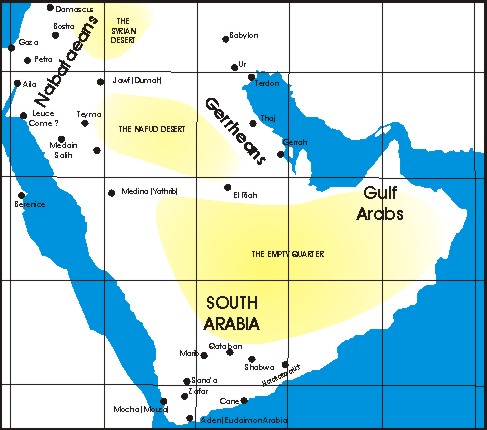
Four possible places where Arab developed seamanship
In order to evaluate these other Arab nations, we will examine their marine knowledge and ability, the ability of their civilization to support a large maritime trade business, evidence of foreign trade in their culture, evidence of wealth earned in such lucrative foreign trade, and the evidence given by ancient historians.
- Maritime Knowledge and Ability
The Arabian Peninsula is small, barren, and void of trees of any significant size. Shipbuilding however, is possible at various places along the coasts, where trees can be imported or brought from the northern interior. Ships have been built along the northern ports of the Red Sea for centuries. Biblical records mention fleets of ships being assembled by Solomon and Hirum at Aila, the northern Nabataean port on the Red Sea and modern day Aqaba. While some archeologists doubt that ships could have been built at Aila, most agree that port facilities existed in ancient times on the Island of Pharos just off the Aqaba coast.
There were no shipbuilding locations further south on the Arabian side of the Red Sea, until one comes to Yemen. Here wood could be transported from the interior to the coast. Because of the ban on maritime shipping by the interior kingdoms, this could not have happened until the Himyarites had taken control of Southern Arabia. While they were still a small kingdom, they controlled only the coast, and not the interior mountains. The kingdoms in the mountains demanded that all trade pass through them and not through the coast. So the Himyarites on the coast built small inflated leather rafts to float their goods to an island and then load them on board Nabataean ships.
It was possible for Arabs on the coast of southeastern Oman and in the Persian Gulf to construct small ships, provided they had access to sufficient wood and other resources. The Gerrheans of the northern Persian Gulf had obtained sufficient lumber to build their boats for many years. As far as I know, no other Arab powers in Arabia developed shipbuilding capacities.
Archeology so far has shown us that Omani shipbuilding did not develop until many centuries later. So while shipbuilding along these coasts was not developed, it doesn’t mean that the Arabs on these coasts didn’t buy ships from the Indians.
- Ability to Support a Large Maritime Trade Business
Neither the Gerrheans nor the Gulf Arabs had any sufficient sized cities or ports during this time in history. While they conducted some trade with Indian vessels passing buy, there is no archeological evidence uncovered to date that these Arab nations had a sufficiently developed port to handle the large amount of trade that was passing through Alexandria at this time. So, at this point, only the Sabaeans of Yemen and the Nabataeans qualify to be the Arabs who traded with India, as they had large cities developed through incense trade with each other.
- Evidence of Foreign Trade in Culture
There is no archeological evidence to date of the Gerrheans or Gulf Arabs having any sufficient contact with the outside powers, either from India or from Europe. While archeology on this side of the Arabian peninsula is just beginning, the civilizations that are emerging do not seem to be highly developed. While the Sabaeans of Yemen had some contact with Asians, Nabataean culture is full of adaptations from Indian, Egyptian and European cultures.
- Evidence of Wealth Earned in Lucrative Foreign Trade
One would expect that centuries of trade between the east and west would allow merchants to amass great wealth. There is no evidence of this wealth among the Gulf Arabs at this time. The Gerheans had one major city, although it was not very large, nor extensively decorated. The Nabataeans and Yemeni Arabs, however, were very wealthy.

The UAE has a number of interesting old ruins, but most date back into the Islamic era at the earliest.
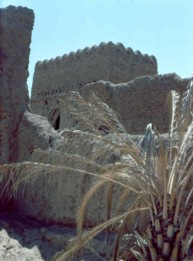
There is little evidence of any major civilization existing from 200 BC to 300 AD.
Evidence given by Ancient Historians
As I mentioned, we have good records from Strabo’s days during the Roman Empire. We also have a relatively clear picture of the India maritime trade during the first century from a shipping manual known as the Periplus of the Erythraean Sea. This manual tells us that once the Romans cleared Aden of the pirates, ships ventured into the Indian Ocean where only Arab sailors dared to venture before. The Periplus tells us that after the destruction of Aden, two principle ports operated on the Arab side. One was known as Mouza and the other as Cane.
Mouza (Mocha)
During the early 1980’s I had opportunity to visit the city of Mocha and explore some of the Red Sea coast with a four wheel drive vehicle. Many of Arabs in the villages we entered had never seen a white person before. All along the coast we explored old Portuguese forts, Arab ports, and groves of palm trees. While there were plenty of palm trees, there was a distinct shortage of other types of trees that might produce significant timbers for shipbuilding.
The village of Mocha is a small place with the sun beating down on a handful of buildings and a few dhows pulled up on the beach. There is, however, a small port, and the place looks as if it was capable of sustaining a limited amount of maritime shipping. Inland from Mocha, coffee was and still is grown. Much of this coffee was exported through the port of Mocha, and thus Mocha was a natural place for pirates to hang out and later for the Arabs of Mocha to venture forth in shipping expeditions. To date only limited archeological exploration has been done around Mocha. From ancient records though, it seems that Mocha was a late bloomer, and only came into being as a port after 20 AD and later around 150 AD as a larger center of trade. This advancement in trade may have occurred from the influx of Nabataean traders, who moved their business south after the Romans annexed Nabataea.
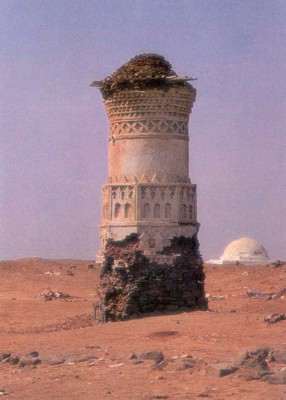
The old lighthouse in Mocha, now in a ruined state and some distance from the shore.
Cane
Cane is located on the southern coast of Yemen, and in Roman times was known for it’s abundance of exotic Indian goods. Strabo tells us that ships regularly left Cane for Indian, Sri Lanka, and perhaps China. Once Aden was destroyed, the majority of shipping moved to Cane. This was only natural, as Cane had become the principle port in southern Arabia for exporting frankincense. By the time of the Romans, the camel caravans through the desert had become a thing of the past, and Strabo, ever interested in such things, doesn’t even acknowledge the existence of caravan trade in Arabia. Rather, he points to the maritime trade that was taking place on the Red Sea.
While the Periplus mentions many other smaller fishing ports and places of interest on the Arabian coast and along the Persian Gulf, it does not mention any other port as handling Indian or Chinese goods. From this we can conclude that all Asian shipping was handled in Cane, Mocha, Leuce Come, or the Egyptian ports on the Red Sea.
It is for this reason, that we can conclusively exclude the Gulf Arabs as being major shippers of Indian goods. So, our attention must return to the Arabs of the Red Sea. Who were the Arabs using the Cane and Mouza ports? We know that Egyptians sailed out of Berenice and Myos Hormos. The Nabataeans maintained ports at Luce Come and Aila. Since the Egyptians didn’t venture out of the Red Sea until the Romans cleared the pirates out of Aden, this leaves the Nabataeans as the sole known maritime powers. We have already established that they regularly used Cane and Mouza as places to pick up goods.
Who Used the Ports?
Wherever the Nabataeans ventured, they had the habit of creating Nabataean settlements. For instance, they did this at Selah, just outside of the Edomite capital of Busheira. They did this at Medina Saleh, located 12 kilometers from Dedan (modern Al Ula), the ancient capital of the Thamuds and Lihynaites who lived in Saudi Arabia. They also did this at Jenysos just a few kilometers south of the ancient port city of Gaza. They did this at Bostra, near Damascus and they also developed settlements at all the major places along the overland caravan routes between Aila and Gaza and Damascus.
And so it is that we find that the unnamed Arabs on the Indian Ocean also created settlements in India, Sri Lanka and eventually in Canton China. It should comes as no surprise that they may have developed settlements at Mouza and Cane.
Cargo Sizes
While we don’t have record of shipping practices before the Romans, we do have some interesting records of shipping ventures during the time of the Roman Empire. Interestingly enough, all of the cargoes are small, and suitable for small ships.
Lionel Casson ventures a guess at this, suggesting that the cargoes were so expensive that traders would have feared great loss if one boat was sunk. Therefore they either shipped on small boats, or they cooperated to purchase larger amounts. In order to hedge against loss, eventually many shippers would have cooperated together to fill the cargo demands of larger boats. In other place, he ventures another guess at this, suggesting that boat captains would take on a limited cargo of very expensive items, and then along the way they would fill their huge Roman cargo boats with local goods such as grain and wine that could be sold at local ports.
There is another possibility. To date, large Roman cargo boats are only found in the Mediterranean. They were totally unsuited for the rough cross winds of the Red Sea as well as the many coral reefs. Perhaps Roman cargo boats only plied the Mediterranean, where their principle cargos were grain, oil, and other bulk items. Perhaps the Arab merchants were the ones who carried the expensive cargoes in their smaller ships. As the Arab dhows were limited to under 30 tons, they were a perfect fit for investors who wished to purchase and import luxury items. Arab ships had traded with India for centuries, and had all the necessary connections.
Many of the cargoes that passed through the Red Sea came at specific times. Frankincense was originally harvested only once year, but later bi-annual harvesting was practiced. If the total frankincense harvest was around 3000 tons as Strabo tells us then we should be able to calculate the number of boats needed to move this cargo.
If the boats were Arab dhows with a maximum cargo of around 30 tons, then fleet of 100 dhows could have transported the entire harvest up the Red Sea. If the 3000 tons refers to the combined harvest then 50 dhows could have moved each harvest. If huge Roman merchant ships were involved, (500 tons each) then the entire harvest could have been moved with six huge grain transport ships.
Against this background, consider the risk. If a single Arab dhow was lost, either to natural elements or pirates, then only one percent of the harvest was lost. (Still a phenomenal loss.) If a single Roman transport was lost then 16% of the harvest was destroyed.
Taxation
The Periplus of the Erythraean Sea gives us an overall view of Indian and Ethiopian shipping routes during the first century AD. It is interesting to notice that cargos from India and Ethiopia were only taxed in a number of places. Roman taxation on luxury goods was 25%, payable at Leuce Come.
As far as we know, goods passing through Mouza and Cane were not taxed by the Romans, but may have been taxed by the local rulers. These South Arabian ports were used mainly for storage, watering etc., but not as hubs of international trade as some would have us believe. True, goods were for sale at these ports, but the issue of taxation leads us to believe that these were not the home ports of Arab shippers.
According to the Periplus, taxation was conducted by the Romans at Bernice, Myos Hormos, and Leuce Come.
Origin of the word “Arab”
Throughout the writings of ancient historians, the word Arab and Nabataean is used interchangeably. Josephus called the Nabataeans Arabs repeatedly, using such terms as: Aretas, king of the Arabs.
Nabataean language was Arabic. As merchants they ranged over much of Arabia. On the other hand, the Sabeans, Mineans, and Gerrheans all had specific language dialects and names but were seldom referred to as Arabs.
Thus it would not be unreasonable to suggest that when ancient writers referred to the Arab maritime traders, they thought that it was perfectly clear to the reader at that time, that they were referring to the Nabataeans. (See Arabia in Ancient History)
Home Ports
The Nabataeans maintained two ports that we know about. The first was Aila at the northern end of the Gulf of Aqaba. This port was used almost exclusively by Arab boats as the Gulf of Aqaba was known for its foul winds, making it a very difficult port for the square rigged European boats. (Casson, Periplus page 144) Arab dhows however, could sail much closer to the wind, and could better utilize Aila, providing it with goods from southern Arabia. It is interesting to note that the Romans ended their road at Aila, rather than continuing farther down the Arabian coast.
The Nabataeans also maintained a port on the Red Sea proper, known as Leuce Come (meaning white village.) This harbor later served as a port of trade for European ships as well as the smaller Arab dhows that would come loaded with freight from Arabia. (Periplus 19) The Nabataeans/Romans maintained a customs office at Leuce Come as well as a centurion and a detachment of soldiers. The usual customs on luxury goods was 25%. This port may have been located at the modern village of Khuraybah. (See Leuce Come) From Leuce Come a caravan route wound it’s way north, perhaps via the Hegra, north through Wadi Rum and on to Petra. (Strabo 16.781)
Civilization Records
All of the great civilizations wrote their accomplishments in some form. The pharaohs wrote about their conquests on temple walls. The Babylonians wrote on clay tablets. The Jews wrote in scrolls. But the Nabataeans left us with few written records. In their place we are left with the magnificent ruins of the cities of Petra, Hegra, Elusa, Bostra, and others. These magnificent cities declare to us the greatness of the Nabataeans. They, more than any other Arab people or civilization attained greatness. Their cities and monuments declare their greatness, and their architectural styles declare their contacts with other civilizations. What other Arab civilization can boast such greatness, derived from their trade alone?
And if this is not enough, Nabataean temples were built in Italy, Naples, Egypt, Turkey, and throughout Arabia. Their gods were worshiped up until the time of the prophet Mohammed, when he chose one of the Nabataean gods, Allah, to be worshiped above the others.
It is my conclusion that the Nabataeans were the only Arab people who had the ability, the infrastructure, and the connections necessary to conduct maritime trade with India. And they are the only Arab civilization who seemed to have profited handsomely from foreign trade.
Along with this, their architecture, religious practices and symbolism, and even their language portray evidence of contact with India. And they, of all the Arab civilizations have their names recorded in Chinese history!
Conclusion
So from the time of Ptolemy Philadelphos foreign trade with Asia expanded rapidly on the Red Sea with many Indian goods started to arrive in great quantities in the Red Sea ports before being moved on to Alexandria. Then, during the reign of Philadelphos, embassies were exchanged between him and Asoka of India. When the Romans finally arrived on the scene, Alexandria was considered the greatest trading city and port in the entire world.
The ancient historians tell us that it was the Arab traders who brought these goods to Egypt, but they don’t tell us which Arab traders. While there may have been a number of different types of Arab traders working at the same time, it is evident from the wealthy and culturally rich Nabataean ruins, that the Nabataeans must have been principle players in the trade on the Red Sea, the Indian Ocean and possibly beyond.
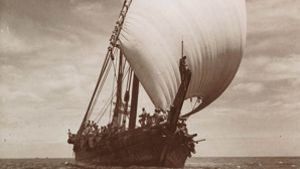
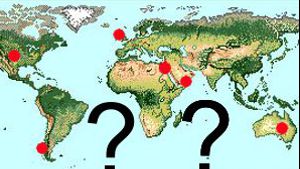
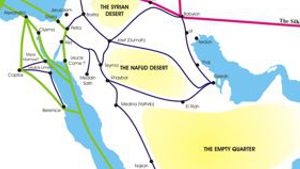
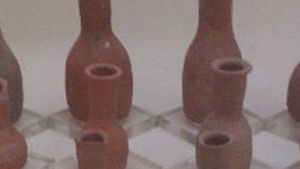
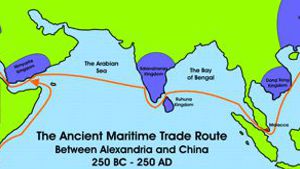





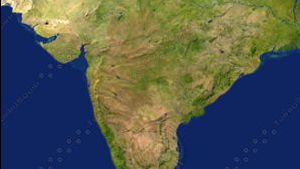
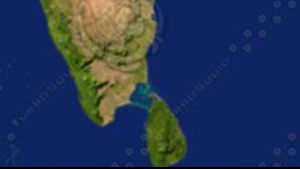

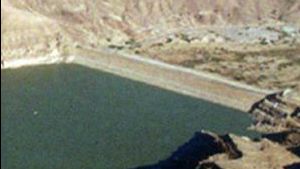
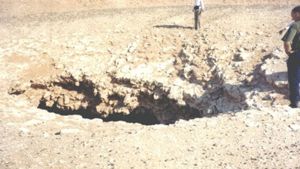

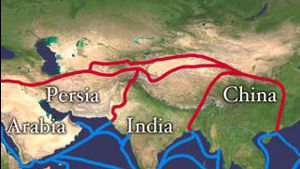
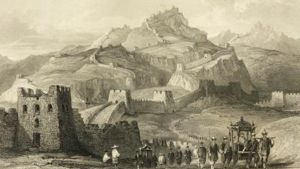
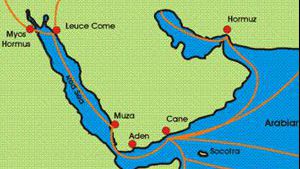
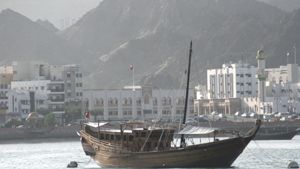
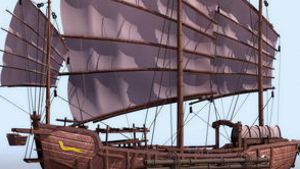
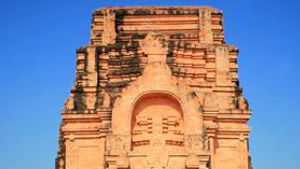

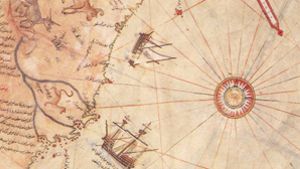
Page Discussion
Membership is required to comment. Membership is free of charge and available to everyone over the age of 16. Just click SignUp, or make a comment below. You will need a user name and a password. The system will automatically send a code to your email address. It should arrive in a few minutes. Enter the code, and you are finished.
Members who post adverts or use inappropriate language or make disrespectful comments will have their membership removed and be barred from the site. By becoming a member you agree to our Terms of Use and our Privacy, Cookies & Ad Policies. Remember that we will never, under any circumstances, sell or give your email address or private information to anyone unless required by law. Please keep your comments on topic. Thanks!